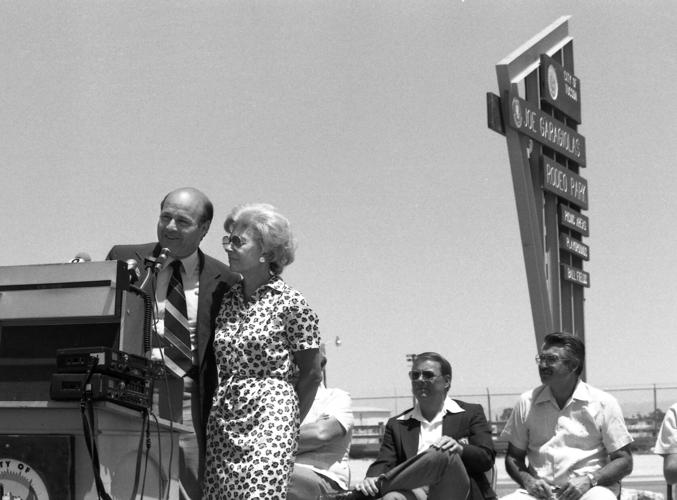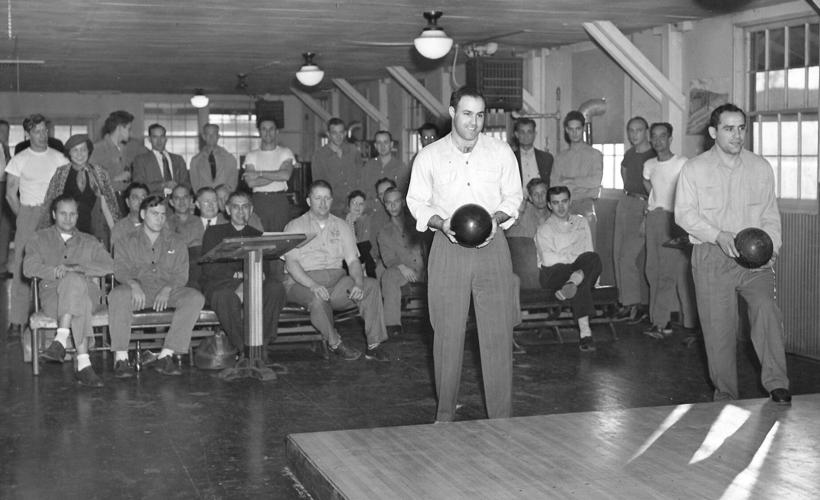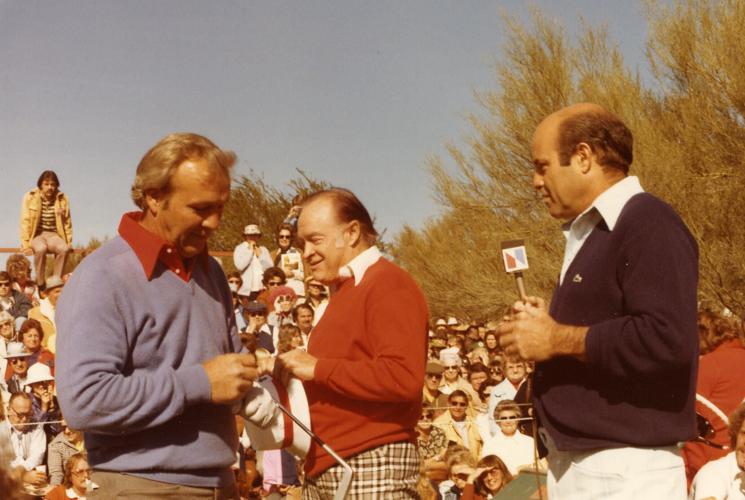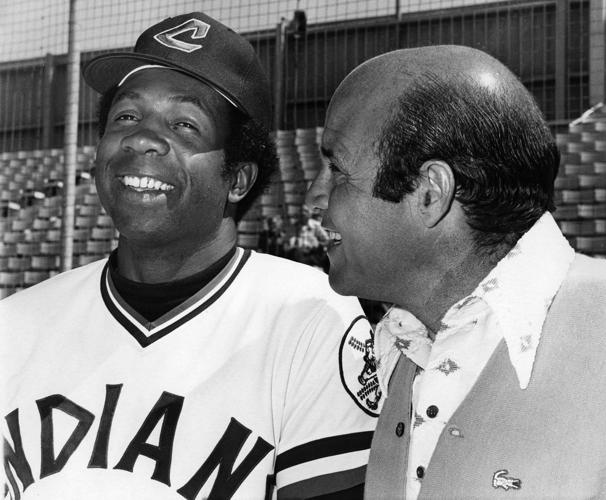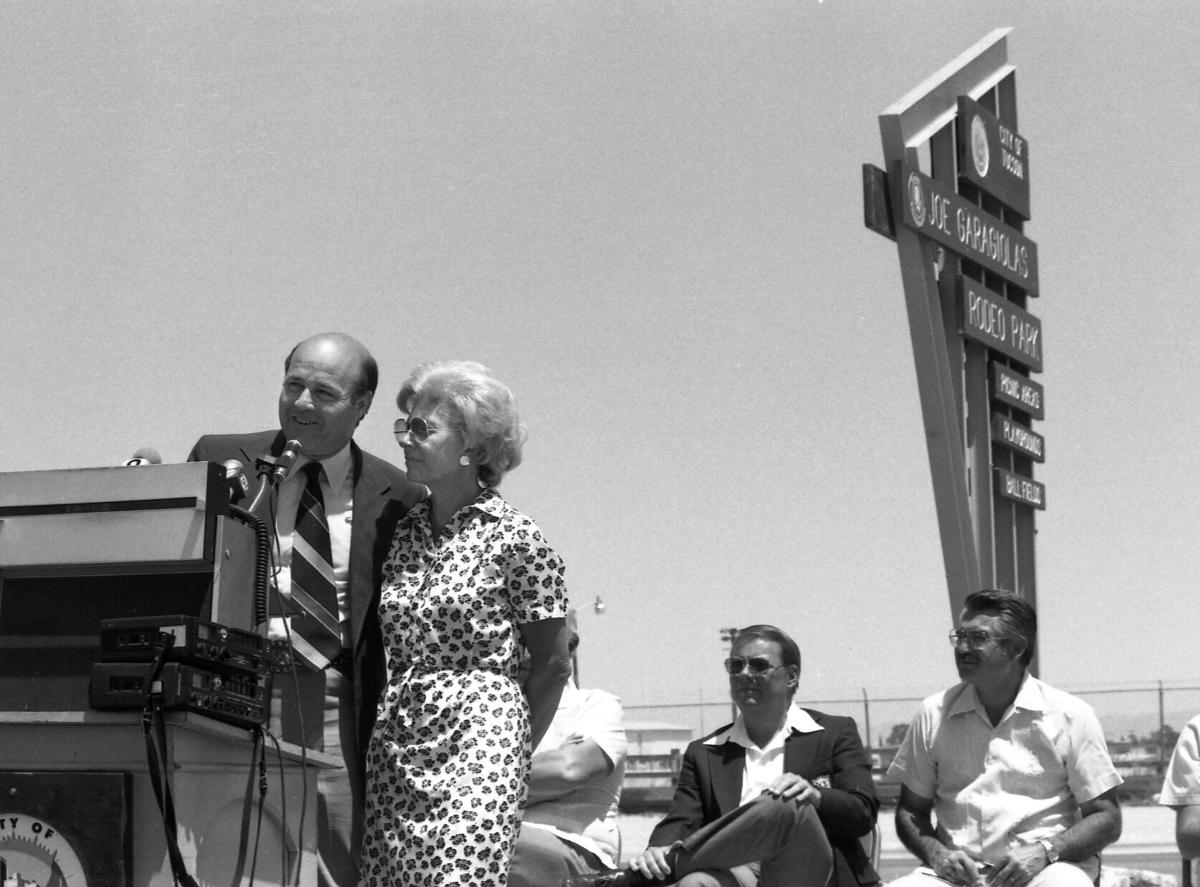A famed Major League Baseball broadcaster’s ties to Tucson began in 1977 when he hosted the first Joe Garagiola-Tucson Open Golf Tournament, sponsored by the Tucson Conquistadores.
He also competed in the regular pro-am charity tournament that preceded the Tucson Open, where he partnered with President Gerald Ford.
“He loved Tucson. Tucson loved him,” the Tucson Citizen newspaper later wrote of Garagiola.
Garagiola was born in 1926 in St. Louis. He grew up on “The Hill,” an Italian American section of St. Louis, across the street from his best friend and future New York Yankee Yogi Berra.
The two friends spent most of their free time playing games with other boys in the neighborhood, with their favorite sport being baseball.
Their field of dreams wasn’t on a farm in Iowa but on Elizabeth Avenue in Missouri. They didn’t cut down a cornfield near their home to build a ballfield but they did paint bases on the street pavement in front of their homes. Nor did they wield lumber like Joe Jackson’s legendary Black Betsy bat, but they did nail broken bats together to make a semi-useable one.

Joe Garagiola & Yogi Berra bowling in 1948.
At 13 years old, Garagiola was given a tryout by a St. Louis Cardinals scout. Two years later, the team sent him to its farm club in Springfield, MO., where he was a clubhouse boy. Soon after, the Red Birds signed him and he spent a couple of years in the minors as a player, in between earning his high school diploma.
In 1944, during World War II, he was drafted and assigned to Fort Riley, Kansas, but didn’t see much action since he was aboard a ship headed for the Pacific Theater when the war ended.
The next year, Garagiola was discharged and returned to the Cardinals’ organization, this time to the major league club.
His first season, Garagiola found himself in the World Series against the Boston Red Sox. In the series he caught five of the seven games and went 6 for 19 with four RBIs and enjoyed the sweet taste of victory, although this would be the pinnacle of his athletic career.
The next two years saw Garagiola struggling to keep his job in the major leagues. But soon life would get better, at least for a bit.
In 1949 he married Audrie Ross in a ceremony that was attended by Yogi Berra, at this point with the New York Yankees. The couple would go on to have three children, Joe Jr., Steve and Gina.
The following year he had a career resurgence, batting .347, but on June 1, 1950, he collided with Jackie Robinson and separated his left shoulder, which bothered him the remainder of his career.
He played for a few more seasons, for the Pirates, Cubs and Giants. It was with the Chicago Cubs that he first stepped foot in the Arizona desert, attending spring training in 1953 at Rendezvous Park (later replaced by the nearby Hohokam Stadium) in Mesa.
The following season was his last and when he was traded to the New York Giants, towards the end of the season, he became ineligible to play in the 1954 World Series.
After Garagiola’s retirement from playing baseball, Harry Caray, the Cardinals’ announcer, recommended him for the team’s broadcast booth, where he shared his wealth of baseball knowledge as well as his comedic prowess.
His comedic fame grew quickly after he wrote his first book, the very popular “Baseball is a Funny Game,” which came out in 1960.
Gina Bridgeman, Garagiola’s daughter, recently recalled that a neighbor told Jack Paar, host of the Tonight show, about the new book, which resulted in her father getting an invite onto the popular late night show. “That opened many network doors for dad, especially at NBC,” she said.
This included an appearance soon after on NBC’s Today show to promote his book, which led to weekly spots on the program.
The following spring, Garagiola joined play-by-play announcers Lindsey Nelson and Bob Wolff to provide the color commentary to the broadcast on NBC’s Saturday and Sunday Game of the Week, and worked on the World Series and All-Star Game. This gig ended around 1964.
He spent the next three seasons with Phil Rizzuto, Jerry Coleman and Red Barber as part of the team calling games for the New York Yankees, which included announcing Mickey Mantle’s 500th home run.

Hall of Farmers Frank Robinson, left, and Joe Garagiola in April 1975 at Hi Corbett Field in Tucson.
His next and biggest career move was as co-host along with Hugh Downs and Barbara Walters of Today. In this role, he was freed from the restrictions of just covering sports and expanded, interviewing the likes of award-winning poet Marianne Moore. His work on Today ended in 1973.
For the next 14 years (1974-88), he appeared in the NBC sports broadcasting booth with former Yankees shortstop Tony Kubeck, covering the regular season, All-Star and World Series games.
In 1977, Garagiola lent his name to the Tucson golfing event and hosted.

Left to right: Arnold Palmer, Bob Hope and Joe Garagiola at the Tucson Open.
Bridgeman, his daughter, shared, “One of the best memories at the Tucson Open for me was meeting Dodgers pitcher Tommy John and his wife Sally at the tournament. I mentioned to them that one of my dreams was to sing the U.S. national anthem at a major league ballpark. When they returned to L.A., they arranged for that to happen, as a surprise for my dad on one of his Game of the Week broadcasts. It remains one of the highlights of my life as well as one of my greatest memories of my dad.”
The Joe Garagiola Tucson Open Golf Tournament existed until 1983, when its name was changed to the Seiko-Tucson Open Match Play Championship. The Tucson Conquistadores dropped Garagiola in favor of the Japanese watchmaker and its one-million-dollar involvement.
The Tucson Citizen wrote, “For seven years, Joe was the toastmaster-general of the Tucson stop on the PGA Tour. And some of those who follow pro golf’s traveling show will tell you he was perhaps the most cordial, funniest, best-liked and hardest-working celebrity host the game has known. ...
“He was paid not a dime for all those years, for all his tireless efforts — recruiting one of the biggest casts of celebrities on the Tour, working and planning and putting on the big variety show on Pro-Am day every year.”
In January 1982, at the Tucson Conquistadores Sports Award Banquet, Garagiola listened to Mayor Lew Murphy (namesake of Murphy's Overpass and the Murphy-Wilmot Library), likely expecting to hear about great athletes, but instead heard the political leader read a proclamation that thanked him for being the “glue that brings together the Tucson tournament.” Murphy then officially announced that Tucson’s Rodeo Park on Irvington Road would be renamed in his honor, unveiling a sign that read: “Joe Garagiola’s Rodeo Park.”
On April 5, 1982, the City Council officially changed the name, followed a couple months later by a dedication ceremony. Garagiola’s work with the Tucson Conquistadores had helped raise $10,000 to light the Little League baseball fields in the park.
In 1983, looking to boost ratings, NBC hired announcer Vin Scully as the main announcer and relegated Garagiola to the secondary role. Five years later, after announcing the World Series on NBC, Garagiola resigned, ending a 27-year relationship with company.
NBC, however, decided to bring him back on the Today show two years later, working with Bryant Gumbel and Katie Couric, which lasted about 20 months.
In 1991, the National Baseball Hall of Fame bestowed upon Garagiola the Ford C. Frick Award, presented annually for excellence in baseball broadcasting.
Garagiola on occasion made an appearance in the broadcasting booth for the Arizona Diamondbacks baseball team, where his son Joe Jr. was general manager at the time.
During the 1990s, he was involved with a couple of different baseball-related charitable causes. He co-founded the Baseball Assistance Team (B.A.T.), which provided confidential economic help to former coaches, players and scouts in need, and the National Spit Tobacco Education Program to try to rid baseball of chewing tobacco.
As a result, in 2014 the Hall of Fame recognized Garagiola’s service with the Buck O’Neil Lifetime Achievement Award.
Also, in the 1990s, he began a relationship with the St. Peter’s Indian Mission Catholic School, an impoverished educational facility for Akimel O’odham (Pima) and Pee-Posh (Maricopa) children on the Gila River Indian Reservation, 25 miles south of Phoenix.
He spent a lot of time at the school and wasn’t shy about hitting up friends, everyone from Jerry Colangelo, owner of the Phoenix Suns at the time, to Manny Cantu, manager of Play It Again Sports, for donations bringing in hundreds of thousands of dollars and materials to the school. He facilitated the repair or construction of a basketball court, a soccer and track field, an all-purpose facility for gatherings and events, a library and computer learning center and extensive repairs to the old mission church. He was honored by tribal leaders with the nickname “Awesome Fox.”
Today his name can be seen on The Joe Garagiola Learning Center and the Awesome Fox Field at the mission school.
In April 2001, the Arizona Daily Star published an editorial stating that Joe Garagiola was a good guy but that the Tucson park should be named for a Tucsonan.
Soon after, a follow-up editorial in the Star suggested the park be named Rodolfo P. Garcia or Rudy Garcia Park for the former president of Tucson’s American Little League. “Garcia led the charge to create the park in the 1960s. He even had to fight the city to get it for his South Side Little League kids,” the editorial said, adding, “Hundreds if not thousands of South Side kids and parents have played and cheered without knowing that they did so, in large part, because of Rudy Garcia’s determination.”
On May 21, 2001, the City Council voted to change the name from Joe Garagiola’s Rodeo Park to Rudy Garcia Park. It also voted to rename baseball Field # 7 to Joe Garagiola Field #7, and directed staff to create plaques for both men and place them at the park.
On a recent trip to the park, the Street Smarts author didn't find Joe Garagiola's name on Field # 7, nor could he find any plaques honoring these two men.
Garagiola died on March 23, 2016, survived by Audrie, his wife of 66 years, and their three children, as well as by many fans and admirers.


